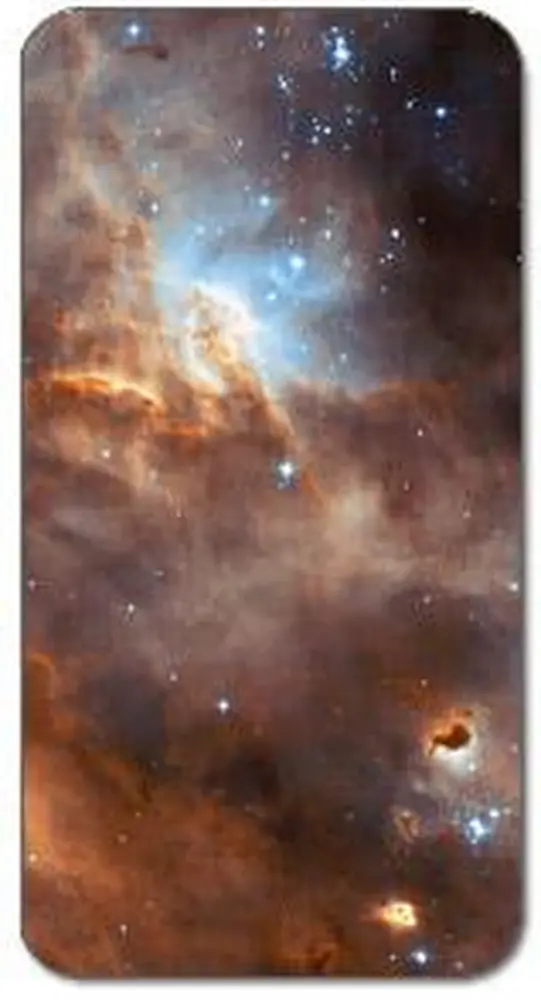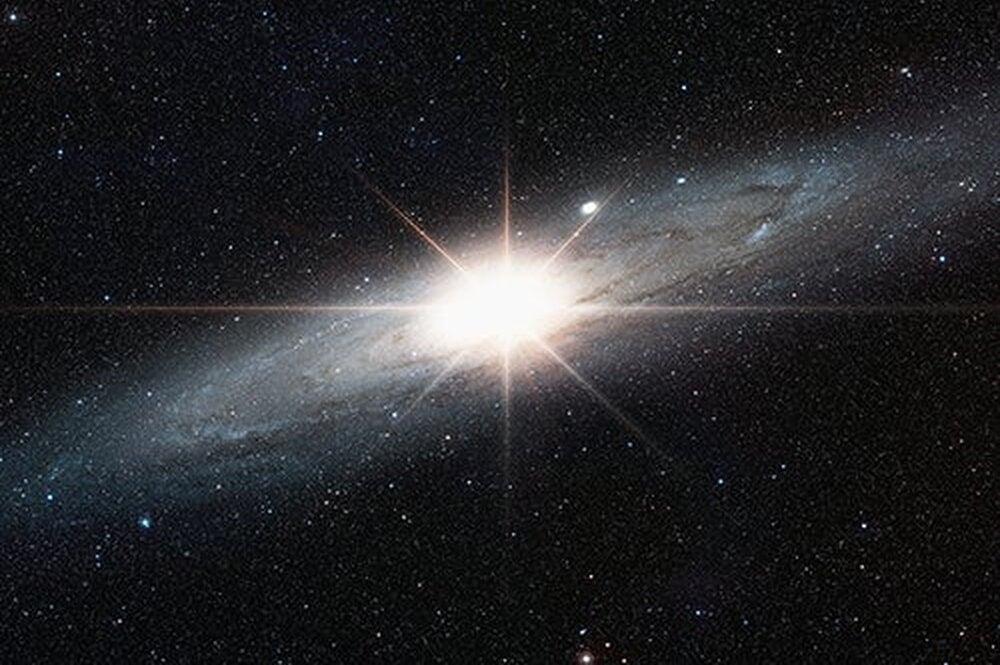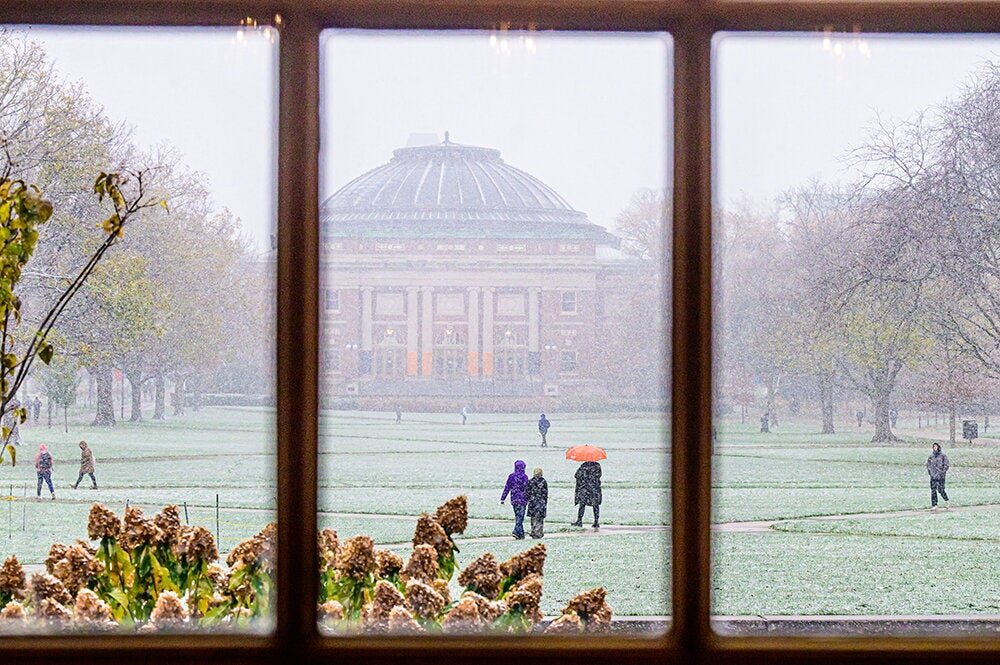

Recent images of a star-forming "nursery" in a neighboring galaxy are helping scientists better understand how stars came to populate our own Milky Way.
You-Hua Chu, an astronomer in LAS, and Yäel Nazé, from the Universite de Liège, Belgium, are analyzing images taken by the Hubble Space Telescope of the N11B region of the Large Magellanic Cloud (LMC) that offer a rare snapshot of how old stars propagate new ones. The LMC, which is 160,000 light-years from Earth, is the only galaxy in which interstellar structures and their underlying massive stellar population can be studied with high resolution across an entire galaxy. The images of the N11B region are particularly informative because they capture, with unusual clarity, the formation of three generations of stars.
In the Hubble image at right, two of those generations are visible. The blue-white stars at the top are the "mothers." They formed when clusters of massive old stars (not visible in this image) cleared and compressed ambient gas into an expanding shell. This shell compressed the surrounding dense gas into stars.
To the right of the image are several smaller dark clouds, or globules, of interstellar dust, which are silhouetted against glowing interstellar gas from the "hot" mother stars. A generation of new stars is being born inside these globules.


